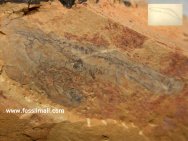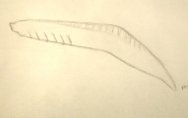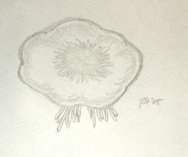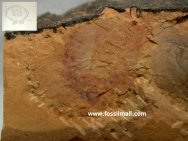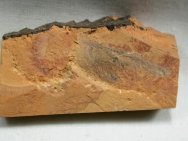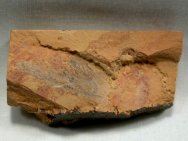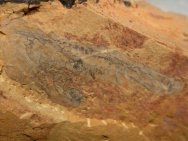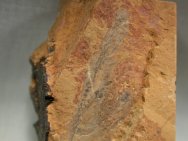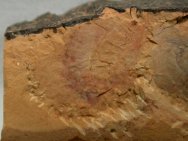Yunnanozoon lividum
Phylum Hemichordata
Eldonia eumorpha
Problemmatica
Geological Time: Early Cambrian (~525 million years ago)
Size (25.4mm=1 inch): Yunnanozoon: 27 mm long and 11 mm across; Eldonia: 17 mm across on a 22 mm by 47 mm matrix
Fossil Site: Chengjiang Maotianshan Shales, Quiongzhusi Section, Yu’anshan Member, Heilinpu Formation Maotianshan, Yuxi, Chengjiang, Yunnan Province, China
|
This
one comes from the site of the original discovery of the Chengjiang
Biota, Maotianshan (Mao Tian Hill). The diversity of soft-tissue
fossils is astonishing: algae, medusiforms, sponges, priapulids,
annelid-like worms, echinoderms, arthropods (including trilobites),
hemichordates, chordates, and the first agnathan fish make up just
a small fraction of the total. Numerous problematic forms are known
as well, some of which may have represented failed attempts at diversity
that did not persist to the present day. As the earliest of the
hemichordates, its study casts light upon the early evolution of
both the chordates and the vertebrates that sprung from them as
the story of life unfolded. The linear structure is the gut, which
in some specimens is filled
Also see: Chengjiang Biota List Chengjiang Fossils |
